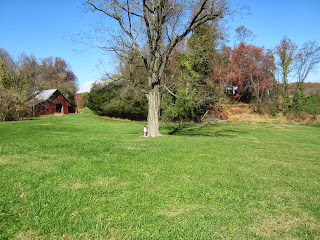In the summer, things can crop up quickly in the health department. Little things not too serious that might become serious.
By mid-June of this summer, two problems surfaced:
1) Second Son developed an irritated eye. It looked swollen about the lid like maybe a bug bite. We put an ice pack on it. But it got worse and spread to the other eye. And made the whites of the eyes red. It became clear that it was conjunctivitis maybe brought on by pink-eye.
Here's what we tried: homemade eyewashes. First one was a simple baking soda rinse. Second, chamomile tea rinse. Both made with boiling water. We used an eye cup and, when we switched from eye to eye, we sterilized in between.
We tried hard and there would be improvement but then it would come back full-force. We had to throw in the towel and go to the pediatrician.
Which involves this: wait all day for an appointment time, drive in gnarly traffic to appointment, get there on time but wait one half hour or more to get in with doctor, spend 3 minutes with doctor to have him say it is conjunctivitis and write out a script for antibiotic eye drops.
2) First Daughter showed up with something the same time as Second Son's eye issue. (My suspicion is that they both developed these things after spending an afternoon in a dirty pool.)
Hers was an itchy area around her ear. I began treating it with some salve I have called Good Goop---a mixture of a lot of healing herbs. To my dismay, it seemed to make it worse. She was really irritated by the itching so I moved onto an over-the-counter anti-itch hydrocortisone cream. At first, it seemed to work......but then it didn't.
It spread more behind the line of her ear and out into her face and on her earlobe. There was a tell-tale "ring" on the outer line around the ear---which I recognized as ringworm having battled ringworm in the past. I quickly moved onto the anti-fungals---tea tree oil, specifically.
We were into week 3 and it was now taking on a cauliflower like appearance when not doused with tea tree oil. A white and wrinkled up look. Time to get more serious. I consulted an herbal primer by an herbalist queen, Rosemary Gladstar. She had a recipe for turmeric paste. I cobbled together the ingredients I had on hand: one curcumin pill, kitchen turmeric herb, drops of tea tree oil and eucalyptus oil and added rubbing alcohol to make a paste. I painted it on the area. First Daughter said it brought relief because it felt like she had a coat over the area.
The paste had to be scrubbed off after leaving it on all day. At night, I soothed the area with an application of local honey (tip from sister blogger D). When First Daughter didn't feel like the paste, I just would do tea tree oil by itself. I was giving myself a couple of more days before heading to the doctor for antifungal prescription. I would never have let it get this far:
After several days of alternating between turmeric paste, tea tree oil and honey, success was achieved!
Score card so far for the summer:
Allopathic......1
Alternative.....1
August 2014 Update:
Success wasn't really achieved. I thought it was but then it came back again. More serious measures were taken in mid-August: a crushed garlic and turmeric paste applied to the area and covered with a bandaid for a day. Not a good idea. Much, much too much. I was horrified that it became a pus encapsuled wound. I worried about infection and tended to it as an infected area.
Because First Daughter has a great immune system, it cleared quickly. And after it cleared...the ringworm was definitely gone. What was left behind was a dryness to the skin that lasted for a couple of months....but ringworm gone.
So next time: a more gentle form of garlic paste somehow....






